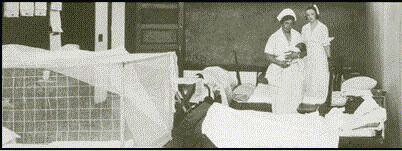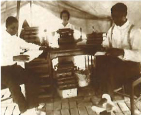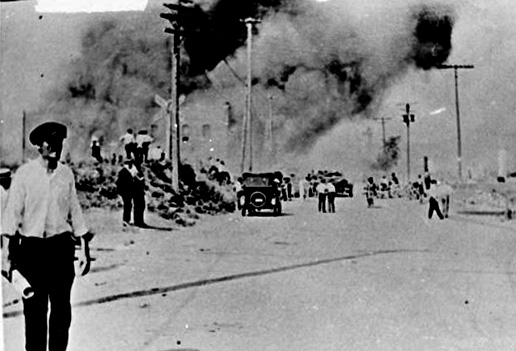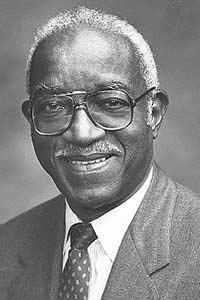In a previous blog post, I gave a short overview of the destruction that took place during the Tulsa Race Riot. You can read about it here. In this post, I’ll talk more about the days following the devastating riot.
From the outset, the entire incident quickly earned the moniker of “the negro uprising.” As agencies across the nation attempted to reach out and send aid to the victims, leaders of the Tulsa community demurely turned it away. Their stance was that it was their problem and they would take care of it.
“Tulsa feels intensely humiliated and …pledges its every effort in wiping out the stain…the disgrace and disaster.” “ The rest of the United States must know that the real citizenship of Tulsa weeps at this unspeakable crime and will make good the damage, so far as can be done to the last penny.”*
To “make good the damage” never happened. Meanwhile the “real citizenship” as they called themselves, set forth to pass a particular fire ordinance that would forever prohibit the citizens of Greenwood from ever rebuilding. (Thankfully, this folly was later defeated in the Oklahoma Supreme Court.)
Angels of Mercy – The Red Cross
 The one agency allowed to assist – and this almost from the very outset – was the Red Cross. Many referred to the agency as “angels of mercy,” as they ministered physically and emotionally to the shell-shocked victims .
The one agency allowed to assist – and this almost from the very outset – was the Red Cross. Many referred to the agency as “angels of mercy,” as they ministered physically and emotionally to the shell-shocked victims .
Red Cross files would later show that between June 1, 1921, and January 1, 1922, they handled the cases of 8,624 individuals (2,480 family units). The care included clothing, bedding, beds, tents, laundry, cooking utensils, dishes, material for clothes, and so forth. Additionally, the Red Cross assisted victims by sending, free of charge, 1,350 telegrams to notify relatives around the country of their safety.
An Amazing Law Firm
 One amazing footnote in the history of the aftermath was the selfless giving of the law firm of Spears, Franklin and Chappelle. These three black men set up shop in a tent and proceeded to provide legal assistance to the victims of the Tulsa Race Riot. They not only lodged claims against the city of Tulsa and the insurance companies, but also counseled and consoled the victims. They made urgent nationwide appeals to African-American groups, churches, and agencies for assistance.
One amazing footnote in the history of the aftermath was the selfless giving of the law firm of Spears, Franklin and Chappelle. These three black men set up shop in a tent and proceeded to provide legal assistance to the victims of the Tulsa Race Riot. They not only lodged claims against the city of Tulsa and the insurance companies, but also counseled and consoled the victims. They made urgent nationwide appeals to African-American groups, churches, and agencies for assistance.
In Mrs. Mary E. Jones Parrish’s book Events of the Tulsa Disaster (p 88), she described this loving and dedicated threesome.
The work was so big – the task so stupendous – that the boys found it absolutely necessary to work many Sundays. Through it all, there was one thing particularly noticeable and that was the “smile” on their faces and the happy laugh so often indulged in by them. They made it a rule to allow no one to come in their “office” or around them with sad faces. This was no easy task. With want and famine and dire distress stalking all about and women and little children in rags and utter poverty on every hand, it took cool nerves and limitless faith in God to do this…
It was this happy law firm that took the fire ordinance suit all the way to the Oklahoma Supreme Court. They worked out of their tent office until the month of November, 1921, at which time they moved into an upstairs room of a building on North Greenwood
Interestingly, the Franklin member of this law firm, B. C. Franklin, was the father of none other than the famed historian John Hope Franklin, Professor Emeritus at Duke University. For those unfamiliar with this noted historian can check out this website: http://library.duke.edu/rubenstein/franklin/bio.html
More on the aftermath of the Tulsa Race Riot in a future blog post.
*Death in a Promised Land: The Tulsa Race Riot of 1921, Scott Ellsworth, p. 83.
~*~*~*~*~*~*~*~*~*~*~*~*~
 Tulsa Tempest now available on Kindle!
Tulsa Tempest now available on Kindle!
When country girl Tessa Jurgen learns that her bootlegging father has promised her in marriage to a man she doesn’t love, she seeks refuge in the supposedly progressive boomtown of Tulsa, Oklahoma. The year is 1921.



In 1996, following increased attention to the riot because of the 75th anniversary of the event, the state legislature authorized the Tulsa Race Riot Commission, to study and prepare a “historical account” of the riot. Undertaking the study “enjoyed strong support from members of both political parties and all political persuasions.”